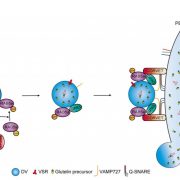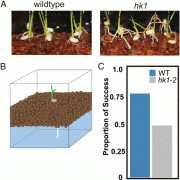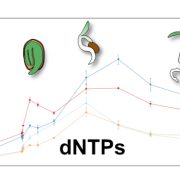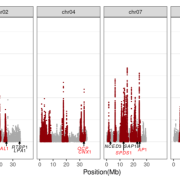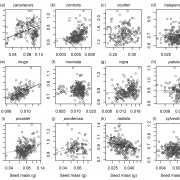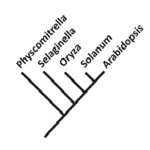Review: Ageing beautifully: can the benefits of seed priming be separated from a reduced lifespan trade-off? (J. Exp. Bot.)
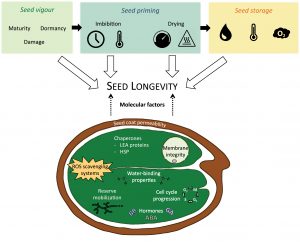 Seed priming is a family of presowing techniques that control water uptake in seeds, so they are dehydrated once metabolic activities have restarted but before the end of germination. Primed seeds have shown increased and more synchronized germination, especially under stressful conditions, making these techniques highly interesting to be applied in agriculture. However, its impact on seed longevity –a fundamental trait for seed management and conservation– is highly variable. Here, Fabrissin and colleagues synthesize the effect of different priming parameters on seed longevity to provide guidelines to properly exploit this technique’s benefits. Overall, primed seeds have reduced seed longevity when compared to non-treated seeds. However, different results were found when seeds of the same species were treated with different techniques such a hydropriming (soaking under optimal temperatures), osmopriming (exposure to desiccant solutions), or hormopriming (imbibition on plant growth regulators). Different molecular pathways were induced by different priming treatments, suggesting the activation of distinct mechanisms that affect seed longevity. Current evidence suggests that adverse effects on seed longevity could be minimized by manipulating various priming parameters, such as imbibition, temperature, and posterior storage conditions. As a result, this review provides an exciting starting point for future research that could lead to widespread use of seed priming without compromising seed lifespan. (Summary by Carlos A. Ordóñez-Parra @caordonezparra) J. Exp. Bot. 10.1093/jxb/erab004
Seed priming is a family of presowing techniques that control water uptake in seeds, so they are dehydrated once metabolic activities have restarted but before the end of germination. Primed seeds have shown increased and more synchronized germination, especially under stressful conditions, making these techniques highly interesting to be applied in agriculture. However, its impact on seed longevity –a fundamental trait for seed management and conservation– is highly variable. Here, Fabrissin and colleagues synthesize the effect of different priming parameters on seed longevity to provide guidelines to properly exploit this technique’s benefits. Overall, primed seeds have reduced seed longevity when compared to non-treated seeds. However, different results were found when seeds of the same species were treated with different techniques such a hydropriming (soaking under optimal temperatures), osmopriming (exposure to desiccant solutions), or hormopriming (imbibition on plant growth regulators). Different molecular pathways were induced by different priming treatments, suggesting the activation of distinct mechanisms that affect seed longevity. Current evidence suggests that adverse effects on seed longevity could be minimized by manipulating various priming parameters, such as imbibition, temperature, and posterior storage conditions. As a result, this review provides an exciting starting point for future research that could lead to widespread use of seed priming without compromising seed lifespan. (Summary by Carlos A. Ordóñez-Parra @caordonezparra) J. Exp. Bot. 10.1093/jxb/erab004


